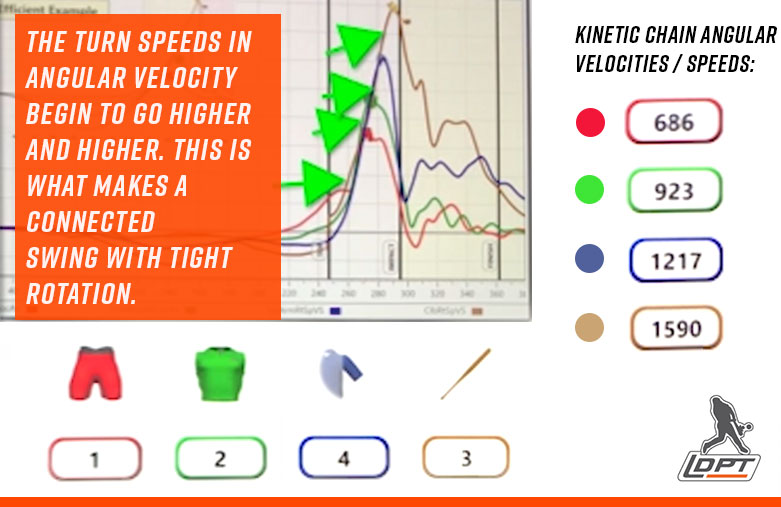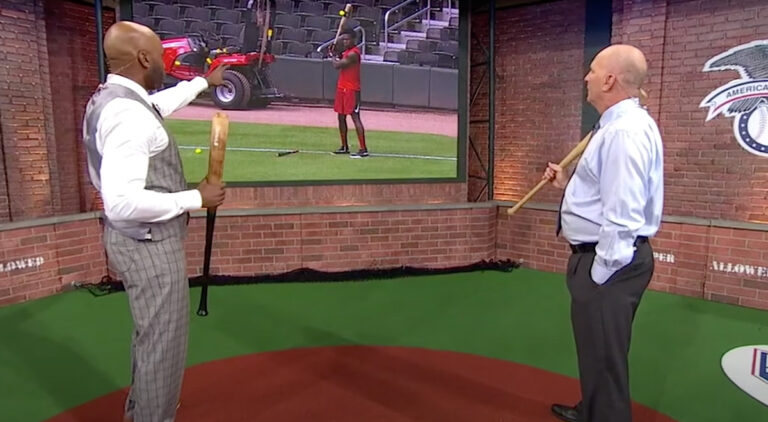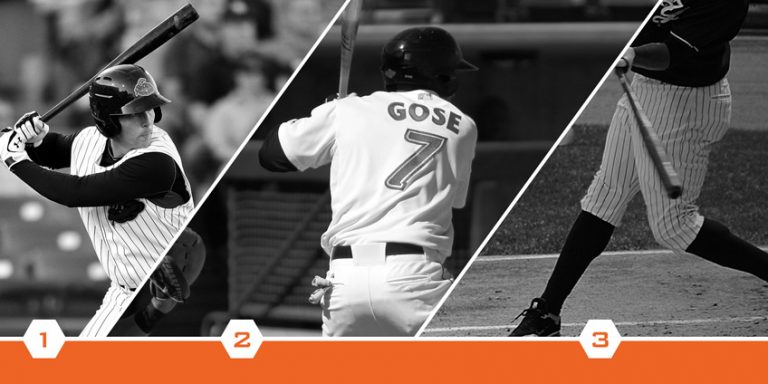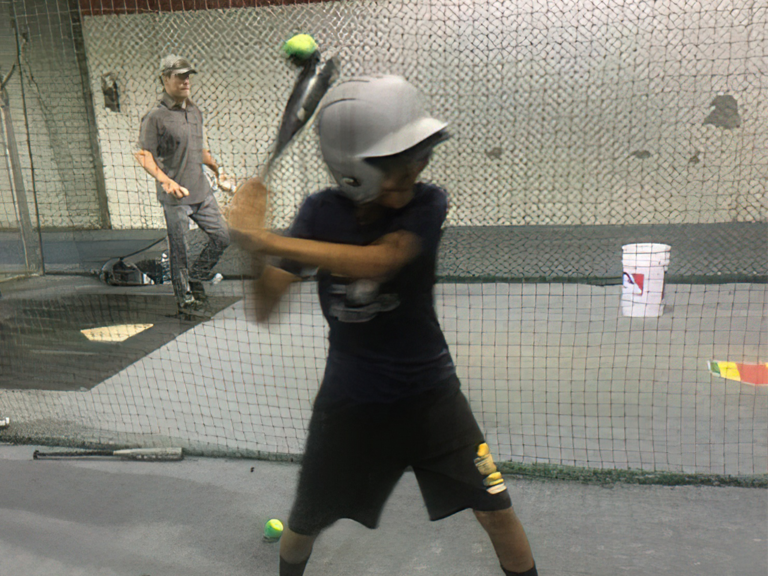Scientific Data Showing Why The LDPT Is Effective
The Data Doesn’t Lie: Proof Showing How The LDPT Effectively Trains Hitters To Have A More Connected Swing
Today we are taking a look at the Line Drive Pro trainer. We have one of our professional trainers strapping the Line Drive Pro Trainer onto the bat, and we are going to take a look at swing mechanics from a kinematic and biomechanical standpoint. One great thing about the Line Drive Pro Trainer is that it gives you excellent visual feedback to whether your swing is connected and carries the bat through the hitting zone.
This can be seen here at 240 frames per second on a high-speed camera, you can see how when the ball is released forward through the middle of the cage how connected the hitter is. This allows for a higher turn speed, which we call angular velocity. When the hitter is connected, the hands stay tighter to the body through the turn and the barrel releases out in front thus carrying through a larger hitting zone. You can see him working closer to full speed here, and you can see how far the barrel works to the front side of the zone, which allows for greater variances on either side of timing.
You want the barrel to enter the zone deep into it, and stay in it out in front, which allows the hitter a bigger window to make contact. This is something we were able to measure, if you look where the barrel enters the zone, you can see how far forward in the zone he attacks the slow pitch. The barrel then stays through the hitting zone. This is what Line Drive Pro hitting trainers are designed to do – give you visual feedback. This allows the player to not need to think about hitting mechanics because a correct swing will be visually seen. When the swing is correct it’s going to be faster and allow you to keep the barrel in the hitting zone longer.
So now let’s look at the objective proof. The objective data we used is from the Diamond Kinetics app and 3D body sensors, and we used these to check how far the barrel stayed in the hitting zone. In this case, the particular high-speed swing we saw measured 35 inches into the zone. I remember doing studies in the past of Albert Pujols and Joe Mauer when they were in their prime and I said the reason they did so well was that their barrels stayed in the zone 36 inches. That meant they were staying in the zone more than most big league hitters, which gave them more solid opportunities for contact.
With the use of the Line Drive Pro we were able to push the barrel through zone longer, in this case the instructor was able to stay in for 35 inches. When you look at the graph on the right it represents our angular velocities, this is our turn speed, and also shows a swing in sequence. The red signifies the lower body or the hip speed feeding into the core up the chain, which feeds into the lead arm, and eventually the bat.
You can see how each peak goes just a little bit later than the previous one, and that is what makes a connected swing with tight rotation. You can see this reflected at the bottom, look how the turn speeds and angular velocity begin to go higher and higher, as we spike at the end with the barrel releasing into the zone. When we have a swing connected like that you’re going to have a constant build-up of energy that’s released when the barrel goes through the strike zone.
What we’re looking for is top speed in an efficient high-ceiling swing where we are getting everything out of our body. But at the same time the Line Drive Pro can give us negative feedback. We’ve all had hitters that we’ve seen cast the bat out away from them. The visual feedback will get the ball going to work down the opposite field line early. As you can see, the bat is getting out away from his body, and a longer arc around the body begins moving off his front hip. With the Diamond Kinetics app, this time the barrel only stayed in the hitting zone for 31 inches. You can see how the arc is further away from the body and eventually cuts off out of the zone. This is a longer slower swing path and we’re getting the same feedback from our kinematic apps that he’s getting from just the visual feedback seen where the ball is released from the Line Drive Pro cup.
Now when we look at that same long swing in the graph compared to the connected one, we had the connected one over on the right, that’s the one that’s in sequence. The body is maximizing its efficiency and transfers energy up the chain. Here on the left, the swing that gets away from our body early means that hands are being released early and it’s no longer in sequence. The body is no longer transferring energy in an efficient pattern, which means we have wasted energy that’s never going to translate into a higher turn speed thus a higher bat speed.
Notice how the numbers at the bottom are a lot lower than the connected swing, only maxing out 1307 degrees per second as opposed to 1590 degrees per second. We can see that the turn speed is slower thus a reduction in bat speed.
The same would hold true for the player that rolls over early and cuts the bat off the front hip early out of the front side of the zone. You can see that the rollover is going to give us the visual feedback of the ball going down into the pull side. The same thing showed up when we tested it kinematically. This time the barrel was only in the hitting zone for 29 inches as it cut quickly off the player’s front hip. We see this type of pattern is one that doesn’t give us a chance to make solid contact throughout the zone, which means timing has to be precise. The visual feedback created from the Line Drive Pro Trainer will tell us that we’re cutting the bat off early. It’s cutting off our front hip and out of the zone and the ball is rolling over to the pull side.
Improve Baseball Swing Mechanics Through Visual Feedback
I like hitting drills that create feel for players without causing them to have to think a great deal. That’s exactly what the Line Drive Pro does and it was tested here with objective data. We know that the Line Drive Pro Trainer will make the hitter more connected, thus increasing his turn speed as well as keeping the bat through a longer hitting zone. This gives you the type of visual feedback that is very easy to understand for the player which is why this is a great tool for players of all ages to use and improve swing mechanics.







